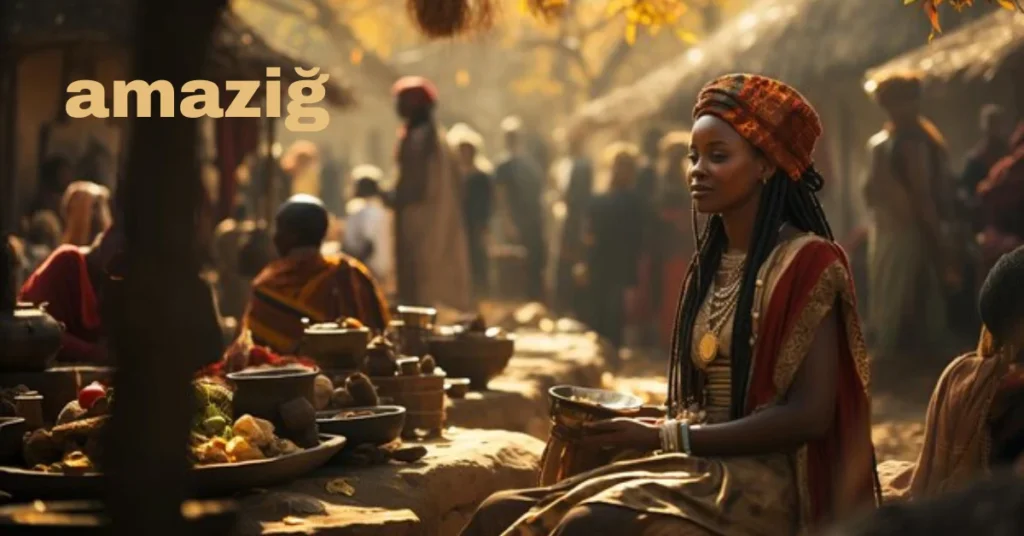Introduction to Amaziğ and its history
Nestled in the heart of North Africa lies a rich tapestry of history, culture, and resilience known as Amaziğ. This vibrant heritage is often overshadowed by more dominant narratives but is bursting with life, stories, and traditions that deserve to be explored. The Amaziğ people have journeyed through centuries of change yet remain steadfast in their identity. Their unique customs breathe color into the arid landscapes they call home.
From majestic mountain ranges to bustling markets, each corner reveals an intriguing aspect of their culture. As we delve deeper into the world of Amaziğ, we will uncover not only who these remarkable people are but also how they’ve navigated challenges while preserving their extraordinary legacy. Join us as we embark on this exploration to celebrate and embrace the hidden treasures within North Africa’s Amaziğ heritage!
The Amaziğ People: Who are they and where do they live?
The Amaziğ people, often referred to as Berbers, are an indigenous ethnic group of North Africa. Their roots trace back thousands of years, with a rich history intertwined with the region’s landscapes.
Primarily inhabiting Morocco, Algeria, Tunisia, and parts of Libya and Mali, they occupy mountainous terrains like the Atlas Mountains and the Sahara Desert. Each area has shaped their unique customs and traditions.
Amaziğ identity is expressed through language, clothing styles, and vibrant arts. They speak various dialects of Tamazight which resonate deeply in their communities.
Despite modern influences, many still maintain a semi-nomadic lifestyle or engage in agriculture. This connection to land plays a significant role in their cultural heritage. The Amaziğ people’s spirit lies not just in where they live but also in how they have preserved their distinct way of life throughout centuries.
Exploring the Diversity of Amaziğ Culture
Amaziğ culture is a vibrant tapestry woven from centuries of history and tradition. It encompasses various art forms, music styles, and languages that reflect the richness of North Africa.
The Amazigh people proudly express their identity through intricate handicrafts. From stunning carpets to silver jewelry, each piece tells a story passed down through generations.
Music also plays a vital role in their cultural expression. Traditional instruments like the guembri create melodies that resonate with the rhythms of nature and human experience.
Festivals celebrate seasonal changes, agricultural milestones, or historical events. These gatherings are colorful displays of dance, storytelling, and traditional cuisine.
Language diversity is another hallmark of Amaziğ culture. With several dialects spoken across different regions, it showcases an enduring connection to heritage despite modern influences.
Every aspect reflects resilience and creativity—a testament to the unique spirit found within Amaziğ communities around North Africa.
Preserving Amaziğ Heritage: Challenges and Efforts
Preserving Amaziğ heritage is a complex endeavor. The challenges are numerous, ranging from globalization to urbanization. These forces often overshadow traditional practices and languages that define the Amaziğ identity.
Many communities strive to keep their customs alive through education and cultural festivals. These events not only celebrate traditions but also foster pride among younger generations. However, funding remains scarce for many grassroots initiatives.
Moreover, documentation of oral histories is crucial yet challenging. As elders pass away, so too do invaluable stories and knowledge about the Amaziğ way of life. Efforts by organizations are underway to record these narratives before they fade into obscurity.
Social media has become an unexpected ally in this fight for preservation. Through online platforms, young Amaziğ voices share their culture globally, creating awareness and appreciation while connecting with diasporic communities around the world.
The Impact of Colonialism on Amaziğ Identity
Colonialism left an indelible mark on the Amaziğ identity, reshaping their social and cultural landscape. European powers often dismissed their rich heritage, imposing foreign cultures and languages that diluted traditional practices.
The imposition of new governance structures disrupted community bonds. Traditional leaders were sidelined, causing fractures within the societal fabric. Many Amaziğ found themselves grappling with a loss of autonomy.
Language was another casualty. Colonizers promoted dominant languages at the expense of indigenous tongues like Tamazight. This shift not only affected communication but also eroded oral histories tied to Amaziğ culture.
Despite these challenges, resistance emerged through art and storytelling. The struggle for recognition became intertwined with the quest for identity among many Amaziğ communities today, reflecting a powerful resilience against colonial legacies that sought to erase them from history.
Revival of Amaziğ Culture in Modern Times
The revival of Amaziğ culture in modern times is a vibrant response to centuries of marginalization. Young people are increasingly embracing their roots, showcasing traditional music and dance at festivals across North Africa.
Social media plays an essential role in this cultural renaissance. Platforms allow the Amaziğ community to share their stories, art, and language with a broader audience. Hashtags like #Amaziğ are trending globally, connecting individuals who celebrate this unique heritage.
Artisans are also reviving ancient crafts. Pottery, weaving, and jewelry-making flourish as skilled hands pass down techniques through generations. These practices not only preserve history but also create economic opportunities.
Educational initiatives have emerged too. Schools now incorporate Amaziğ language classes into their curricula. This effort fosters pride among youth while ensuring that the richness of their culture continues for future generations to cherish and explore further.
Conclusion: Embracing and Celebrating Amaziğ Heritage
The Amaziğ people and their rich heritage are a testament to the resilience of culture. Their history, woven through millennia across North Africa, reveals stories of perseverance and pride. Today, as awareness grows about the significance of preserving such cultures, there is a renewed interest in celebrating Amaziğ identity.
This revival goes beyond mere acknowledgment; it encompasses education, music, art, and language revitalization. Communities are coming together to honor traditions while embracing modern influences that enrich their cultural tapestry.
By supporting initiatives that promote Amaziğ heritage and recognizing its value in our global society, we not only help preserve these traditions but also foster an appreciation for diversity itself. The journey ahead involves collaboration among individuals who share a vision for inclusivity and respect for all cultures.
Embracing the richness of Amaziğ heritage means engaging with its stories and understanding its complexities. It invites everyone to partake in a broader narrative—one where every thread counts towards creating an interconnected world that celebrates rather than marginalizes unique identities.
FAQs
What is “Amaziğ’s”?
Amaziğ’s, also known as Berber, refers to an indigenous ethnic group in North Africa with a rich cultural heritage, known for their traditions, language, and resilience.
Where do the Amaziğ’s people live?
The Amaziğ’s people primarily inhabit Morocco, Algeria, Tunisia, parts of Libya, and Mali, often residing in mountainous regions like the Atlas Mountains and the Sahara Desert.
What are key features of Amaziğ’s culture?
Amaziğ’s culture is marked by its vibrant art, traditional music, intricate crafts like carpets and jewelry, and diverse dialects of the Tamazight language, reflecting their deep connection to heritage.
What challenges does Amaziğ’s heritage face today?
Amaziğ’s heritage faces challenges such as globalization, urbanization, and the impact of colonialism, which threaten to overshadow traditional practices and languages.
How is Amaziğ’s culture being revived in modern times?
Amaziğ’s culture is being revived through social media, educational initiatives, and the resurgence of traditional crafts, with a growing global appreciation and local efforts to preserve and celebrate their heritage.







